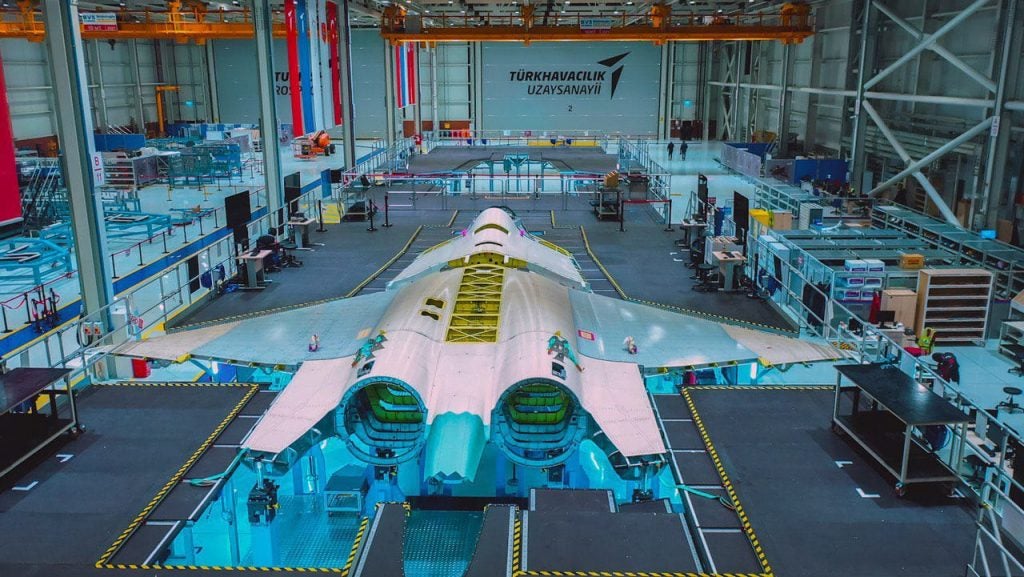Turkey’s Domestic 5th Generation TF-X Fighter Jet Is On The Final Assembly Line
Another significant milestone has been reached in Turkey’s first domestic warplane project. On Wednesday, November 23, the TF-X (MMU in Turkish), Turkey’s future fighter jet, was moved to the Final Assembly Line during a ceremony at the TAI facility. Prof. Dr. İsmail Demir, President of the Defense Industry, shared images of the first prototype of the 5th Generation fighter jet, as well as a video of the ceremony, on social media. The images show that the fighter aircraft’s front fuselage, front middle fuselage, wing module, and rear fuselage have been assembled, but the engine, vertical stabilizer, and landing gear have not yet been integrated.
Turkish Aerospace Industries (TAI) are the prime contractor for the project, which is being coordinated by the Turkish Defense Industry Agency (SSB). At the TF-X assembly line’s opening ceremony, Demir stated that it was a dream for him to be in the process of building such an aircraft as a flight engineer himself and said: “today we are raising the first curtain on our project. Our job will come to an end when our aircraft successfully performs its duties.” Demir emphasized that the experience gained by the company’s employees will spread throughout Turkey and that the products that emerge from the technology used in this project, not only in aviation, but also in many other fields, will propel the country to new heights. Furthermore, Demir added, “Our work is not over yet, we have a lot of work to do. We will continue to work as hard as we can.”
TAI Chairman of the Board Rafet Bozdoğan stated that they intend to finish the project by mid March and added, “we have reached a critical point in the project. I am hopeful that we will be able to meet our armed forces’ expectations very soon. It is a difficult and large project, but if all goes well, we will have taken the plane out of the hangar with the engine running on March 18.” TAI General Manager Temel Kotil stated that they are honored to be the main contractor in the production of Turkey’s first domestically produced warplane, and that ground tests will begin once the plane leaves the hangar, and that they will continue to work at full speed until the first flight takes place.
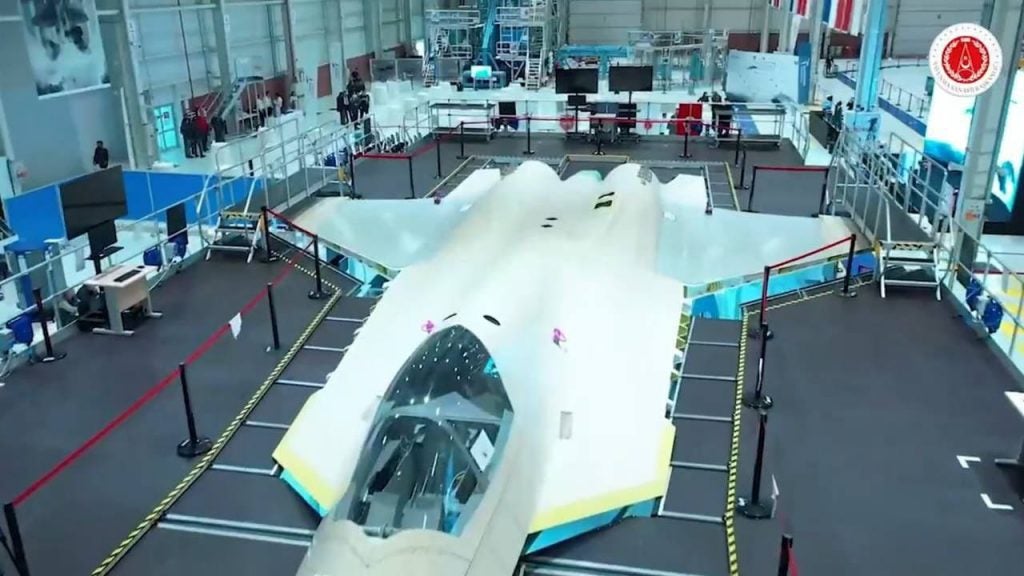
TAI Turkish Fighter X (TF-X) is a 5th generation fighter aircraft project developed by Turkish Aerospace Industries (TAI) for the Turkish Air Force under the coordination of the Turkish Defense Industry Agency (SSB). This project aims to produce modern aircraft designed with domestic means and capabilities to replace the F-4Es, which are nearing the end of their service life, and the F-16s, which are expected to be phased out gradually beginning in the 2030s in the Turkish Air Force Command’s inventory. The program’s design activities began in 2016, and BAE Systems later became a partner in the program in 2017. The aircraft’s full scale model first appeared on the podium at the 2019 Paris Air Show. The first component of the aircraft was manufactured in 2021.
The TF-X Aircraft, according to TAI General Manager Temel Kotil and Demir, will stand out due to its sensors, avionics, weapon systems, and capabilities. The aircraft is expected to be outfitted with an AESA radar manufactured by ASELSAN. ASELSAN will also develop an electronic warfare system for use in national combat aircraft, as well as an electro-optical 360-degree camera system, such as the systems used in F-35 aircraft. TÜBİTAK also developed and delivered to TAI a new generation mission computer system for the aircraft. SAR (Synthetic Aperture Radar System), IRST (Infrared Search and Tracking) Sensor, EOTS (Electro-optical Targeting System), and Helmet Mounted Sight System are among the other sensors and avionics expected to be used on the aircraft. Furthermore, according to Demir, the aircraft will not be visible to the enemy unless it gets too close to radar systems, owing to its material, paint, and low radar cross section value, giving it a significant advantage in the operational environment.
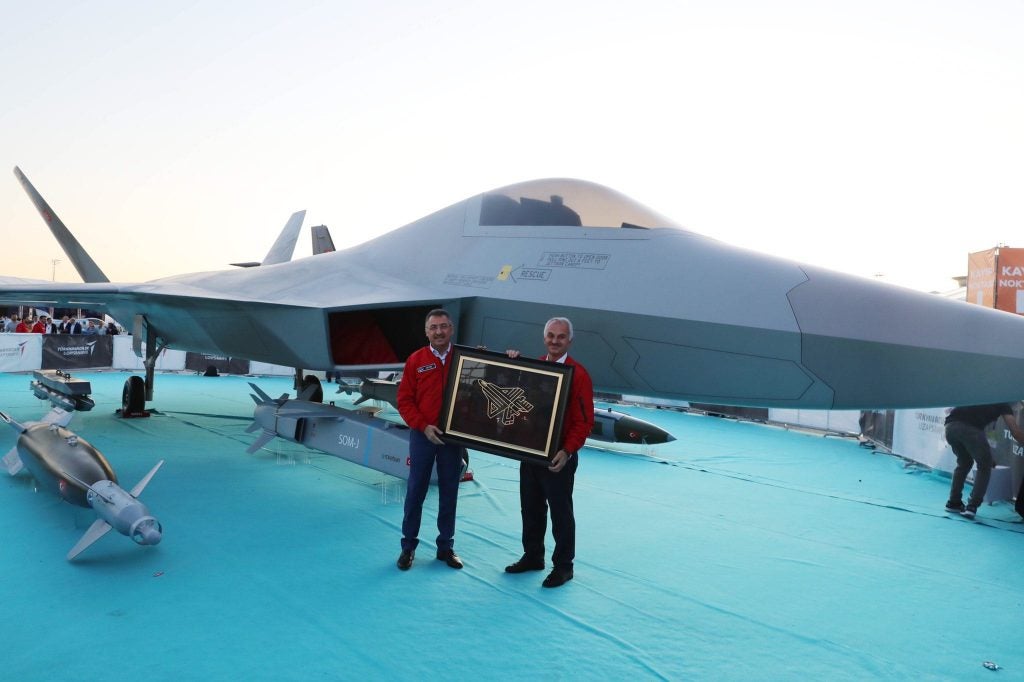
The twin-engine fighter aircraft, with a wingspan of 14 meters, a length of 21 meters, and a height of 6 meters, will be able to fly at an altitude of 55,000 feet at 1.8 times the speed of sound. During the early stages, the engines chosen for the TF-X were the General Electric F110 engines used in F-16s. In this context, TAI received the first ten engines in 2022. These engines will power three TF-X fighter jet prototypes while the remaining engines will be kept as a backup. At the same, the Original Engine Development Project for the TF-X is ongoing. Demir recently stated that he has published a Call for Proposals File regarding the development of a domestic engine to be used in the TF-X, and that TEI and TRMotor have responded so far, with TAEC, a joint venture between Kale Group and Rolls Royce, expected to respond soon.
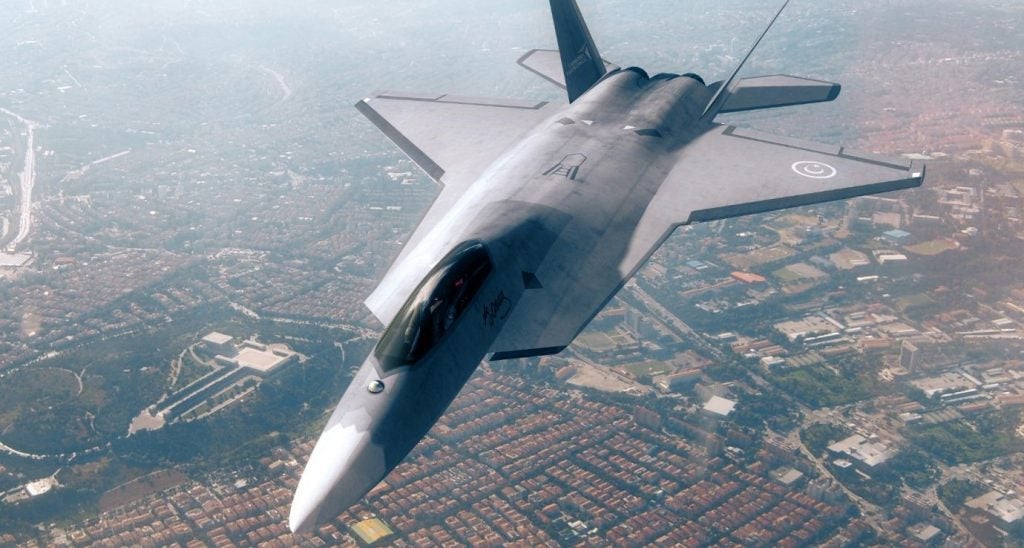
The TF-X will have two internal weapon compartments that can carry eight medium and long-range missiles, four under the fuselage and four on the sides of the fuselage. For missions that do not require stealth, the aircraft will also be able to carry four different weapon systems under the wing. On the other hand, the aircraft’s fuselage will include an internally mounted cannon. The Bozdoğan short-range, within-visual-range missile and the Gökdoğan medium-range, beyond-visual-range missile, both developed by TÜBTAK SAGE, will be among the armaments that the aircraft will be capable of using in air-to-air combat. The TF-X will be able to use ordnance such as the SOM-J cruise missile developed by TÜBİTAK SAGE and Roketsan, as well as MK-82/83 bombs integrated into various guidance kits, in air-to-ground combat.
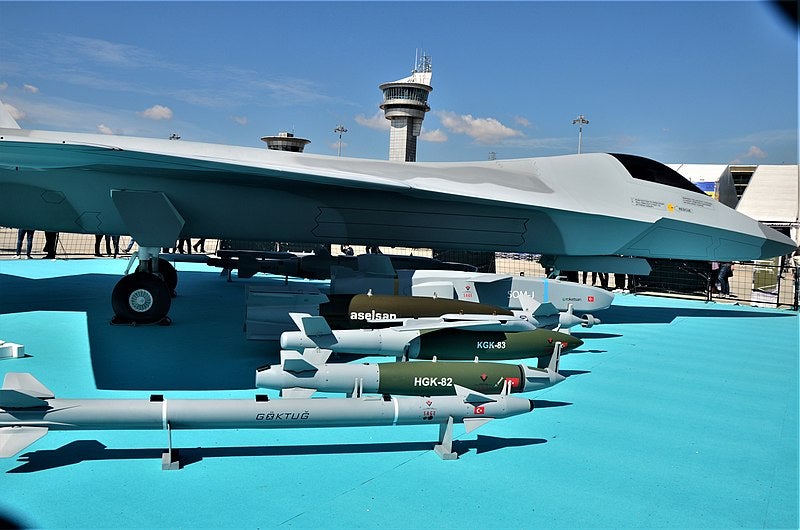
TAI intends for the first prototype to begin ground tests in March next year. The Turkish Air Force is expected to receive the first batch of 14 fighter jets in 2029 as part of the project, which is slated to begin flight tests in 2025 and mass production in 2028 after three years of testing. The TF-Xs is expected to be in the Turkish Air Force’s inventory until the 2070s.

